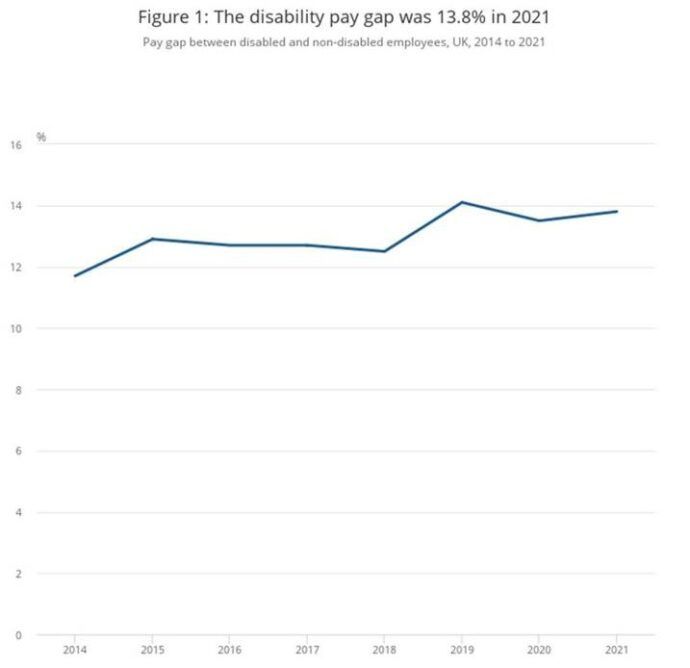UK disability pay gap widens: disabled workers earn £3.5k less than non-disabled employees

Figures published this week by the Office for National Statistics (ONS) show that disabled workers earn on average £1.93 per hour less than non-disabled employees (a gap of over £3,500 per year based on a 35-hour week). The disability pay gap – the difference between median pay for disabled employees and non-disabled employees – was 13.8% in 2021.
In response, Tim Cooper, Chief Executive of national disability charity United Response, said:
The long term widening of the disability pay gap is a disaster in the making.
People with disabilities are already more likely to be impacted by Covid-19 in the workplace and now combined with the rising cost of living crisis, disabled workers are in a devastating financial situation.
To reverse this trend the government and employers must address the pay bias and support disabled people or risk millions of disabled workers being trapped with lower pay and in-work poverty.
UK disability pay gap: 2021 data from the Office for National Statistics (ONS)
- The disability pay gap, the gap between median pay for disabled employees and non-disabled employees, was 13.8% in 2021 and 14.1% in 2019 prior to the coronavirus (COVID-19) pandemic; this gap has widened slightly since 2014 when disabled employees earnt 11.7% less than non-disabled employees.
- The disability pay gap has consistently been wider for disabled men than for disabled women; in 2021 median pay for disabled men was 12.4% less than non-disabled men, and median pay for disabled women was 10.5% less than non-disabled women.
- In 2021, median pay for disabled employees living in Wales was 11.6% less than non-disabled employees, which was the narrowest of the four UK nations; Scotland had the widest disability pay gap at 18.5%.
- Disabled employees who were limited a lot in their day-to-day activities consistently had a wider pay gap to non-disabled employees without a long-lasting health condition (19.9% less in 2021) than disabled employees whose day-to-day activities were limited a little (12.1% in 2021).
- Disabled employees with autism as their main impairment had a wider pay gap in 2021 than disabled people with other types of main impairment, having a median pay 33.5% less than non-disabled employees without a long-lasting health condition.
- Adjusting for personal and job characteristics narrows the pay gap seen between most groups of disabled employees and non-disabled employees without a long-lasting health condition – the largest narrowing was seen for disabled employees with autism as their main impairment, where the adjusted pay gap was 9.9% compared with a non-adjusted pay gap of 33.5%.
